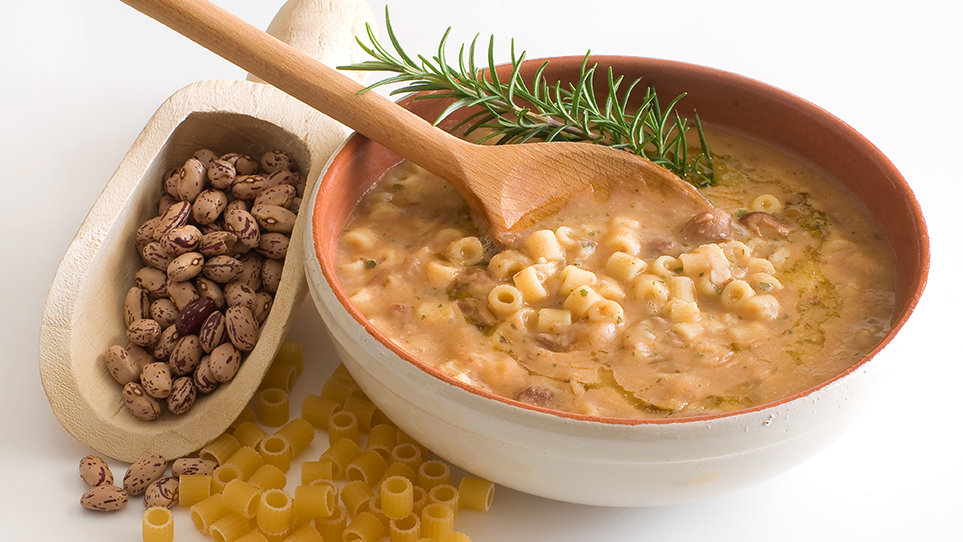July 28, 2024 | POSTED IN Recipes
Pasta E Fagioli

Also known as Pasta Fasule (Neapolitan) or Pasta Fazool (New York)
This hearty Italian dish, literally meaning “pasta and beans,” is a perfect example of cucina povera (peasant cuisine) – delivering maximum flavor and satisfaction at minimal cost. While recipes vary across regions and households, this version is tomato-free, aligning more closely with traditional Italian preparations.
Serves 2 with leftovers (easily doubled)
Ingredients
- 8 oz dried Cranberry beans (or other white beans)
- 6 cups water (adjust for desired thickness)
- 1 carrot, diced
- 1 celery stalk, diced
- 1 onion, diced
- 1 garlic clove, minced
- 1 sprig rosemary
- 1 tbsp olive oil
- 1 cup small pasta (Ditalini, Tubetti, or elbow)
- Small piece of Parmigiano Reggiano rind (optional)
- Salt and pepper to taste
- Extra olive oil and grated Parmigiano for serving
Instructions
- Night before: Soak beans in water overnight, covered, at room temperature.
- Prepare soffritto: In a soup pot, sauté onions, carrots, and celery in olive oil until onions are translucent. Add rosemary and garlic, stirring until fragrant.
- Cook beans: Add beans with their soaking liquid. Ensure beans are well-covered, adding water if necessary. Bring to a boil, then reduce to a simmer. Skim off foam and add Parmigiano rind if using.
- Simmer: Cook until beans are soft but not mushy, stirring occasionally to prevent sticking. Cooking time varies with bean age, so start checking after about 30 minutes.
- Blend: When beans are done, adjust seasoning. Strain 1/2 to 3/4 of the mixture and blend with enough cooking water to create a smooth, not pasty, consistency. Return to pot.
- Cook pasta: In a separate pot, cook pasta 2 minutes less than package instructions. Drain and add to the bean mixture to finish cooking until al dente.
- Serve: Ladle into bowls. Drizzle with olive oil and top with fresh black pepper and grated Parmigiano.
Notes
- The consistency can vary from thick and porridge-like to thinner and more soup-like. Adjust water accordingly.
- Cooking pasta separately for most of its cooking time helps control the dish’s thickness.


